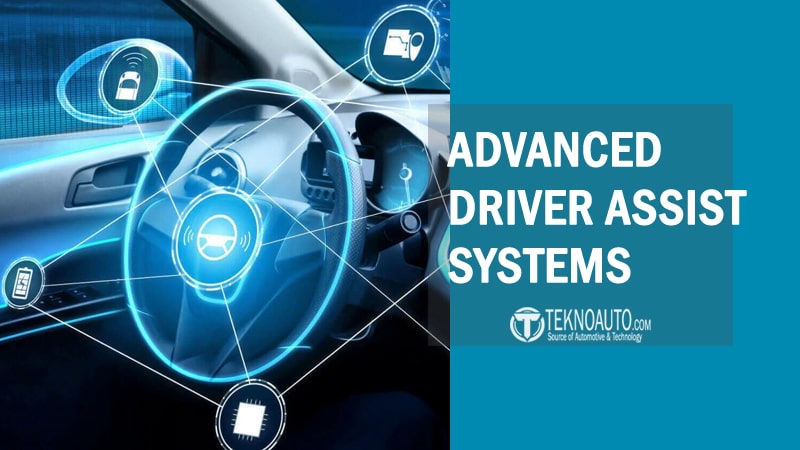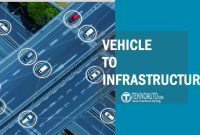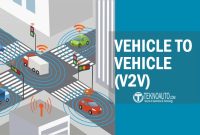Advanced driver assist systems are no longer exclusive to luxury vehicles—they’re quickly becoming a standard in modern car manufacturing. From subtle steering corrections on the highway to automatic emergency braking in city traffic, these technologies are quietly transforming how we drive every day. The presence of advanced driver assist systems (ADAS) in today’s vehicles represents a significant shift from passive safety features to proactive driving intelligence.
As urban environments become more complex and driver distractions increase, automakers are racing to equip vehicles with systems that not only protect occupants but also actively support the driving process. But what exactly makes a system “advanced”? How do these tools perceive road hazards, react to unpredictable situations, and communicate with other vehicle systems in real time?
To understand the true value of ADAS, we need to explore the technology behind the scenes—the sensors, software, and decision-making processes that allow vehicles to assist drivers without taking full control. This article breaks down the essential components of Advanced Driver Assist Systems, how they work, where they’re headed, and why they’re vital in the evolution toward safer, smarter mobility.
What Are Advanced Driver Assist Systems (ADAS)?
Advanced Driver Assist Systems (ADAS) refer to a suite of electronic technologies designed to aid drivers in navigating, controlling, and avoiding hazards on the road. These systems go beyond traditional safety features like seatbelts or airbags by proactively monitoring the driving environment and responding in real time to potential dangers. While Advanced Driver Assist Systems does not make a car fully autonomous, it represents a crucial step toward semi-autonomous mobility by enhancing both situational awareness and driver reaction capabilities.
The evolution of ADAS reflects a broader trend in the automotive industry—moving from passive safety systems to active driving support. In earlier vehicles, safety relied on mitigating damage during or after a crash. ADAS, however, aims to prevent the crash from happening in the first place, using sensors, real-time data processing, and automated responses to avoid or reduce the severity of collisions. Features like automatic emergency braking and lane-keeping assist are now common in many mid-range vehicles, not just premium models.
It’s important to distinguish Advanced Driver Assist Systems from fully autonomous systems. Autonomous vehicles (such as those classified at SAE Level 4 or 5) are designed to operate without human intervention. In contrast, ADAS systems assist but do not replace the driver. They support decision-making, improve awareness, and reduce human error—while still requiring the driver to remain attentive and in control.
Core Purpose of ADAS
At its core, the purpose of advanced driver assist systems is to enhance road safety—not only for the vehicle’s occupants but also for pedestrians, cyclists, and other drivers. By constantly analyzing data from multiple sensors, ADAS can identify risks that may go unnoticed by the human eye or react faster than a person ever could. This proactive approach helps prevent collisions, reduce traffic incidents, and minimize the impact of human error, which is responsible for the vast majority of road accidents globally.
Beyond safety, Advanced Driver Assist Systems is also designed to lighten the mental load of driving. Long highway journeys, congested urban traffic, and complex road conditions can lead to fatigue and poor decision-making. ADAS features like adaptive cruise control and lane centering allow drivers to maintain a safe distance and proper lane position without continuous input, making everyday driving less stressful and more manageable. These systems act as digital co-pilots, assisting without undermining the driver’s authority.
Perhaps most significantly, ADAS serves as a technological bridge to full autonomy. Each ADAS feature represents a modular step toward self-driving capability. As automakers refine these systems—integrating artificial intelligence, real-time data sharing, and vehicle-to-everything (V2X) communication—Advanced Driver Assist Systems becomes the foundation upon which truly autonomous vehicles will eventually be built. In that sense, today’s driver assist technologies aren’t just convenience tools—they’re building blocks for the future of transportation.
Key Features and Technologies in ADAS
Advanced Driver Assist Systems are composed of several interlinked features, each designed to address a specific safety concern or driving challenge. These features work together to support drivers across a wide range of situations—from high-speed cruising to slow-speed parking maneuvers. While not all vehicles are equipped with every ADAS feature, most modern cars now include at least a few of the following systems as standard or optional packages.
Adaptive Cruise Control (ACC)
Adaptive Cruise Control builds upon traditional cruise control by automatically adjusting the vehicle’s speed to maintain a safe following distance from the car ahead. Using radar or camera sensors, ACC monitors traffic flow and can slow down or accelerate the car in response to surrounding conditions. This reduces driver fatigue, especially in stop-and-go traffic or long highway journeys.
Lane Departure Warning (LDW) & Lane Keeping Assist (LKA)
Lane Departure Warning alerts drivers when the vehicle begins to drift out of its lane without signaling, typically using audible warnings or steering wheel vibrations. Lane Keeping Assist goes a step further by gently steering the car back into its lane. These systems help prevent unintentional lane changes due to distraction or drowsiness, which are leading causes of accidents on multi-lane roads.
Blind Spot Detection (BSD)
BSD systems monitor areas that are difficult to see with mirrors alone. When a vehicle enters the blind spot zone, visual alerts on side mirrors or dashboard indicators notify the driver. Some systems also include active intervention, like steering or braking input, if a lane change is attempted while another vehicle is in the blind spot.
Automatic Emergency Braking (AEB)
AEB is one of the most critical safety features in Advanced Driver Assist Systems. It uses radar and camera data to detect imminent collisions with vehicles, pedestrians, or obstacles. If the driver does not react in time, the system automatically applies the brakes to avoid or mitigate the impact. Many insurance agencies and safety organizations consider AEB a must-have technology in modern vehicles.
Traffic Sign Recognition (TSR)
Traffic Sign Recognition uses forward-facing cameras to read and interpret road signs in real time, such as speed limits, no-entry signs, or stop warnings. The detected signs are displayed on the instrument cluster or head-up display, helping drivers stay informed and comply with local regulations.
Rear Cross-Traffic Alert
When reversing out of a parking space, this system detects vehicles approaching from the sides—often in blind zones—and alerts the driver. Some systems also apply the brakes automatically to prevent a collision. It’s especially useful in crowded parking lots and tight urban spaces.
Surround View Camera Systems
Using multiple wide-angle cameras placed around the vehicle, this system provides a 360-degree overhead view on the dashboard screen. It aids in tight parking scenarios and helps prevent low-speed collisions with objects or pedestrians that may be obscured by body panels or blind spots.
Sensor Technologies Behind ADAS
All these features rely on a range of sensor technologies that gather data about the vehicle’s surroundings and internal conditions. Here are the primary sensor types that power Advanced Driver Assist Systems functionalities:
Radar
Radar sensors are widely used in systems like adaptive cruise control and blind spot monitoring. They emit radio waves to measure the distance and speed of surrounding objects, functioning reliably in poor weather conditions like rain or fog.
LiDAR
Light Detection and Ranging (LiDAR) sensors use lasers to generate high-resolution 3D maps of the vehicle’s surroundings. While more commonly associated with autonomous vehicles, LiDAR is increasingly being tested for high-end ADAS due to its precision.
Ultrasonic Sensors
Ultrasonic sensors are typically placed in bumpers and are used for low-speed applications like parking assist or rear cross-traffic alert. They’re excellent at detecting nearby objects within a short range, especially in confined spaces.
Camera-Based Systems
Forward, rear, and surround-view cameras provide visual data that support TSR, LKA, pedestrian detection, and more. These cameras often work with image recognition algorithms and Machine Learning in Self-Driving Cars to interpret complex scenes.
Sensor Fusion and AI Processing
The most advanced ADAS systems combine data from multiple sensors—a process known as sensor fusion. This integrated approach improves accuracy and reliability. AI-driven processors interpret this information in real time, enabling faster decision-making and smoother driver assistance.
Table: Key ADAS Features and Their Functions
| ADAS Feature | Function | Driving Situation |
|---|---|---|
| Adaptive Cruise Control (ACC) | Maintains a set speed and distance from the vehicle ahead | Highway driving, stop-and-go traffic |
| Lane Keeping Assist (LKA) | Detects lane markings and gently steers to keep vehicle centered | Expressways, multi-lane roads |
| Blind Spot Detection (BSD) | Alerts driver when a vehicle is in the blind spot | Lane changing, merging |
| Automatic Emergency Braking (AEB) | Applies brakes if a potential collision is detected | Urban roads, congested traffic |
| Traffic Sign Recognition (TSR) | Identifies road signs and displays them to the driver | City driving, new or unfamiliar areas |
| Rear Cross-Traffic Alert (RCTA) | Warns of vehicles approaching from the side when reversing | Parking lots, driveway exits |
| Driver Drowsiness Detection | Monitors driver behavior and alerts if fatigue is detected | Long trips, late-night driving |
Levels of Driver Assistance: From Basic to Semi-Autonomous

To better understand where Advanced Driver Assist Systems fit within the broader spectrum of vehicle automation, it’s important to look at the standardized Levels of Autonomous Cars defined by the Society of Automotive Engineers (SAE). These range from Level 0 (no automation) to Level 5 (full autonomy). Advanced Driver Assist Systems features are typically found between Level 1 and Level 3, where the human driver remains involved but increasingly shares control with automated systems.
Level 0 – No Automation
The driver is entirely responsible for all aspects of driving, though the vehicle may offer warnings or momentary assistance (like emergency braking alerts). No sustained automation is present.
Level 1 – Driver Assistance
This is the most basic level of automation. The vehicle can assist with either steering or acceleration/braking, but not both simultaneously. For example, Adaptive Cruise Control is a common Level 1 feature, where speed is managed automatically but steering is entirely manual.
Level 2 – Partial Automation
At this stage, the vehicle can control both steering and acceleration/deceleration under specific conditions. However, the driver must remain attentive and ready to take over at all times. Most modern ADAS-equipped vehicles operate at this level. Examples include lane centering combined with adaptive cruise control.
Level 3 – Conditional Automation
The system can manage all aspects of driving in certain environments (like highway driving), and the driver is allowed to disengage temporarily. However, the system will prompt the driver to take back control when needed. Some luxury models, such as the Mercedes-Benz Drive Pilot, offer limited Level 3 capabilities.
How ADAS Fits into These Levels
Advanced Driver Assist Systems plays a supportive, non-decisive role at Levels 1 and 2. While the car may intervene to assist the driver, it doesn’t make independent decisions about the entire driving task. For example, a Level 2 vehicle might steer itself in a lane and adjust speed, but it still relies on the human driver for navigating complex traffic scenarios or responding to unexpected events.
ADAS vs Full Autonomy (Levels 4 and 5)
In contrast, Levels 4 and 5 involve fully autonomous cars that require little to no human intervention. These systems are still under development and not widely available to the public. Advanced Driver Assist Systems, therefore, is not equivalent to autonomous driving—but it’s a critical stepping stone toward that future. It introduces drivers to increasingly automated behavior while keeping them in the loop, preparing society for the eventual transition.
How ADAS Enhances Safety and Driving Experience

Advanced Driver Assist Systems have proven to be more than just a collection of tech features—they represent a measurable improvement in both road safety and driver comfort. By automating repetitive tasks and providing early warnings or intervention in dangerous situations, ADAS significantly reduces the likelihood of accidents and enhances the overall driving experience.
Reducing Accidents Through Early Intervention
One of the most profound impacts of Advanced Driver Assist Systems is its ability to prevent accidents before they happen. According to studies by the IIHS (Insurance Institute for Highway Safety), vehicles equipped with features like automatic emergency braking and blind spot monitoring experience fewer crashes and lower injury rates. For instance, AEB alone can reduce rear-end collisions by up to 50%. These systems react faster than any human can, applying brakes or correcting the vehicle’s path in milliseconds when a threat is detected.
Moreover, lane departure warnings and lane keeping assist help drivers maintain lane discipline—critical on highways and multi-lane roads—while forward collision warnings provide vital seconds for drivers to react in time. These “micro-interventions” may seem subtle, but over time, they translate into significant real-world safety outcomes.
Improving Daily Driving Comfort
ADAS is not just about safety—it’s also about making driving easier and less stressful. In heavy traffic, Adaptive Cruise Control maintains a steady following distance, reducing the constant start-and-stop fatigue. Lane centering systems relieve the mental load of staying precisely aligned on long highway drives. Rear cross-traffic alert and 360-degree camera views make parking and maneuvering in tight spaces much simpler.
For elderly drivers or those with limited mobility, ADAS provides reassurance and confidence, allowing them to stay behind the wheel longer without compromising safety. Even for experienced drivers, features like traffic sign recognition and intelligent speed assistance help maintain better situational awareness in unfamiliar environments.
Real-World Adoption and Feedback
As more consumers experience the benefits of Advanced Driver Assist Systems firsthand, their expectations for in-vehicle technology are rising. Automakers report higher satisfaction rates and stronger customer loyalty for models that include advanced safety packages. In markets like Japan and Europe—where government regulations increasingly mandate certain ADAS features—consumer trust in the technology continues to grow.
What once started as luxury add-ons are now becoming industry standards. And as driver education materials begin to include Advanced Driver Assist Systems awareness, the learning curve continues to shrink. The real challenge now lies not in adoption, but in understanding and using these tools correctly.
Challenges and Limitations of ADAS
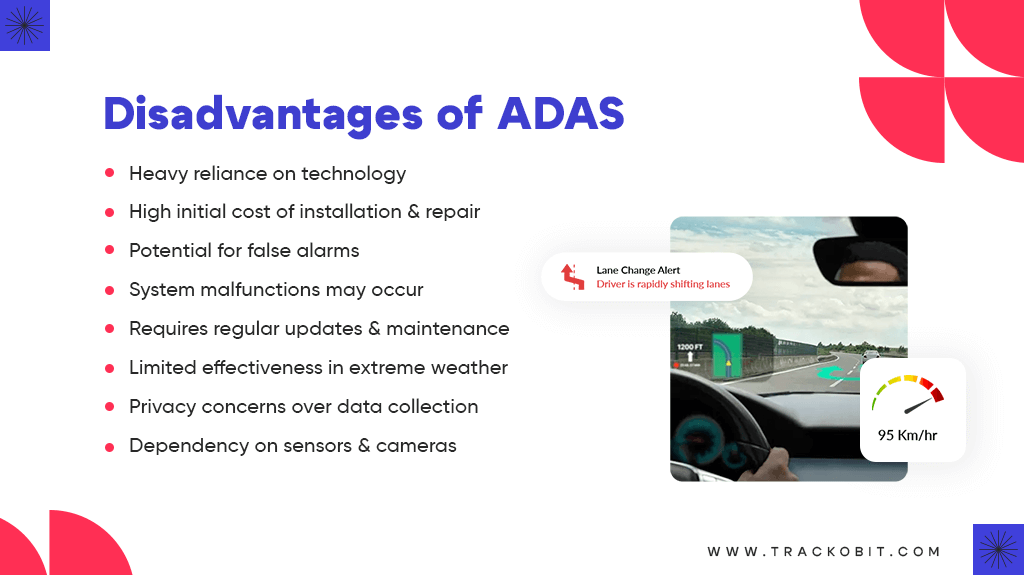
While Advanced Driver Assist Systems offer significant safety and convenience benefits, they are not without challenges or limitations. Understanding these shortcomings is essential for drivers, manufacturers, and policymakers alike to ensure that Advanced Driver Assist Systems is used effectively and responsibly. No technology is infallible, and over-reliance on driver assist features can lead to a false sense of security behind the wheel.
False Positives and Missed Detections
One of the most common issues with ADAS involves sensor misinterpretation. For example, automatic emergency braking might trigger unexpectedly when a harmless object (like a shadow or plastic bag) is misidentified as a threat. These false positives can be startling and may even create new hazards if other drivers are close behind.
Conversely, false negatives—where the system fails to detect a genuine hazard—can be even more dangerous. Situations involving complex lighting, unusual road markings, or erratic pedestrian movement can confuse camera-based systems or overwhelm the onboard processor, leading to inaction when it’s needed most.
Sensor Limitations and Environmental Constraints
ADAS performance is heavily influenced by environmental conditions. Rain, snow, fog, or bright sunlight can obscure camera lenses or interfere with radar and LiDAR sensors. Dirty or obstructed sensors, such as those covered in mud or ice, may cause system errors or disengagement.
For example, lane keeping systems often rely on clear, well-painted lane markings. On older roads or during road construction, these markings may be faint or inconsistent, rendering the system ineffective. Ultrasonic sensors used in parking assist features also have limited range and may struggle to detect low-lying obstacles like curbs or children.
Calibration and Maintenance Requirements
Advanced Driver Assist Systems-equipped vehicles require precise calibration to function properly, especially after a windshield replacement, bumper repair, or suspension adjustment. Misaligned sensors can result in incorrect readings, and most recalibration procedures must be performed at a certified service center using specialized equipment. This adds complexity and cost to routine vehicle maintenance.
Neglecting proper calibration can reduce the effectiveness of the system—or worse, cause it to behave unpredictably. Drivers need to be informed about these requirements and avoid assuming that all features are always operating correctly without verification.
Driver Over-Reliance and Misunderstanding
Perhaps the most critical limitation is human behavior. Some drivers mistakenly believe that ADAS features make their car “self-driving” and reduce their attention behind the wheel. This overconfidence can lead to delayed reactions, misuse of the system, or complete disengagement from the driving process.
Many studies show that the lack of understanding around Advanced Driver Assist Systems capabilities leads to improper usage. For instance, relying on lane keeping assist without hands on the wheel or assuming the car will always brake on its own. Automakers are working to improve user education through better interface design and in-car alerts, but driver training and awareness remain essential.
ADAS in Today’s Automotive Market
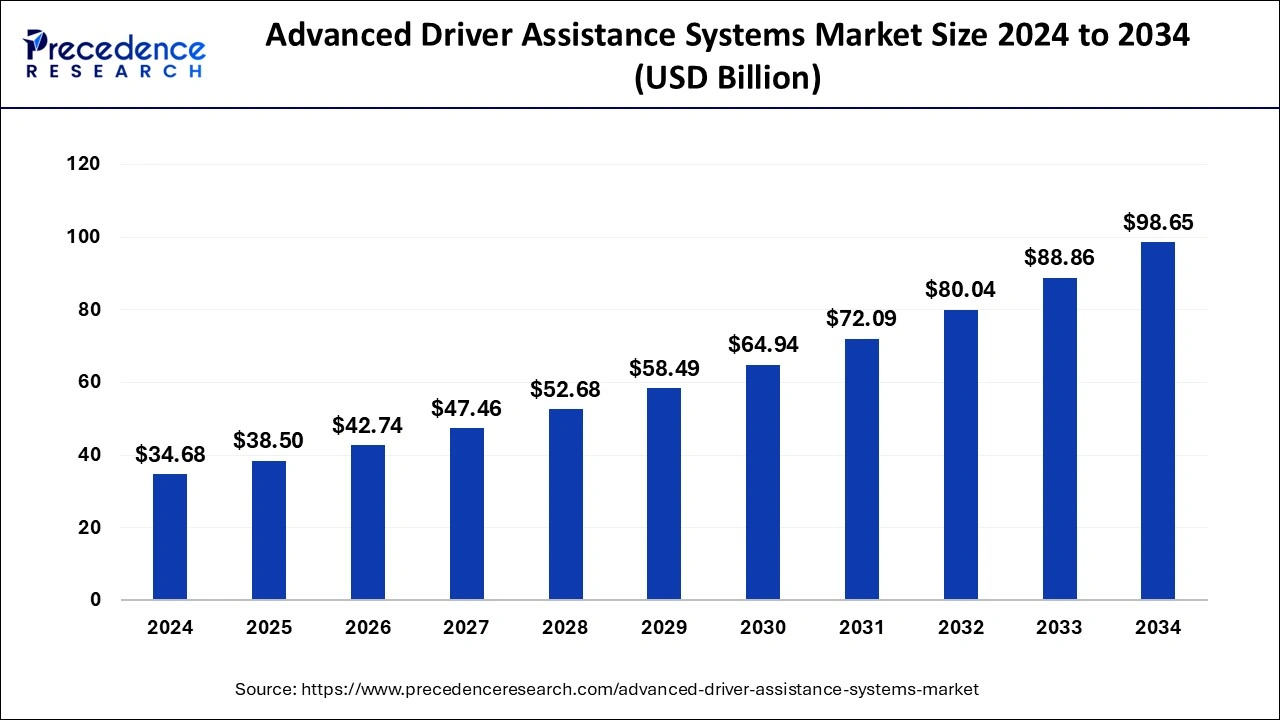
Advanced Driver Assist Systems have rapidly transitioned from premium features in high-end vehicles to mainstream safety components across nearly all segments of the automotive market. Driven by growing consumer demand, safety regulations, and advancements in sensor technology, ADAS has become a defining factor in how manufacturers design, market, and differentiate their vehicles.
Widespread Adoption Across Vehicle Segments
What began as optional technology for luxury sedans and flagship models has now spread to compact cars, family SUVs, commercial fleets, and electric vehicles (EVs). Automakers are increasingly bundling Advanced Driver Assist Systems features into safety packages or including them as standard, especially in regions where regulations encourage or mandate their presence.
For instance, in the European Union, automatic emergency braking (AEB) and lane departure warning (LDW) are now required on all new vehicles sold. In the U.S., most major manufacturers have voluntarily agreed to include AEB as standard on new passenger vehicles. In Asia, markets like Japan and South Korea have also adopted strong incentives and safety standards to encourage ADAS deployment.
Brand-Specific ADAS Suites
Many automakers have developed their own branded Advanced Driver Assist Systems packages, each offering variations of core features. These include:
- Tesla Autopilot / Full Self-Driving (FSD): A highly advanced Level 2+ system offering lane keeping, adaptive cruise, and semi-automated highway navigation. Although its branding implies autonomy, Tesla drivers are required to remain alert and ready to intervene.
- Toyota Safety Sense (TSS): A suite of features including pre-collision system with pedestrian detection, lane tracing assist, and dynamic radar cruise control. Widely available across Toyota’s global lineup.
- Honda Sensing: Found on Honda vehicles, this system offers road departure mitigation, traffic sign recognition, and collision mitigation braking, among other features.
- Ford Co-Pilot360: A package that includes blind spot monitoring, cross-traffic alert, reverse braking assist, and evasive steering assist.
Each of these systems reflects varying levels of sophistication, sensor fusion strategies, and driver interface quality. Some prioritize seamless user experience, while others focus on raw functionality or advanced autonomy previews.
Regional Differences in ADAS Maturity
ADAS adoption also varies by region, influenced by regulatory frameworks, road infrastructure, consumer awareness, and climate. For example:
- Europe leads in regulatory enforcement and safety integration, making ADAS nearly universal in new vehicles.
- North America sees wide adoption but with looser federal mandates—some features are still optional depending on brand and trim.
- Asia-Pacific, particularly Japan and South Korea, is pushing innovation through government partnerships and tech-forward vehicle designs.
Meanwhile, developing markets face challenges like older vehicle fleets, inconsistent infrastructure, and limited public education about driver assist features. However, global trends point toward increasing ADAS penetration, even in cost-sensitive segments.
ADAS vs Other In-Car Technologies
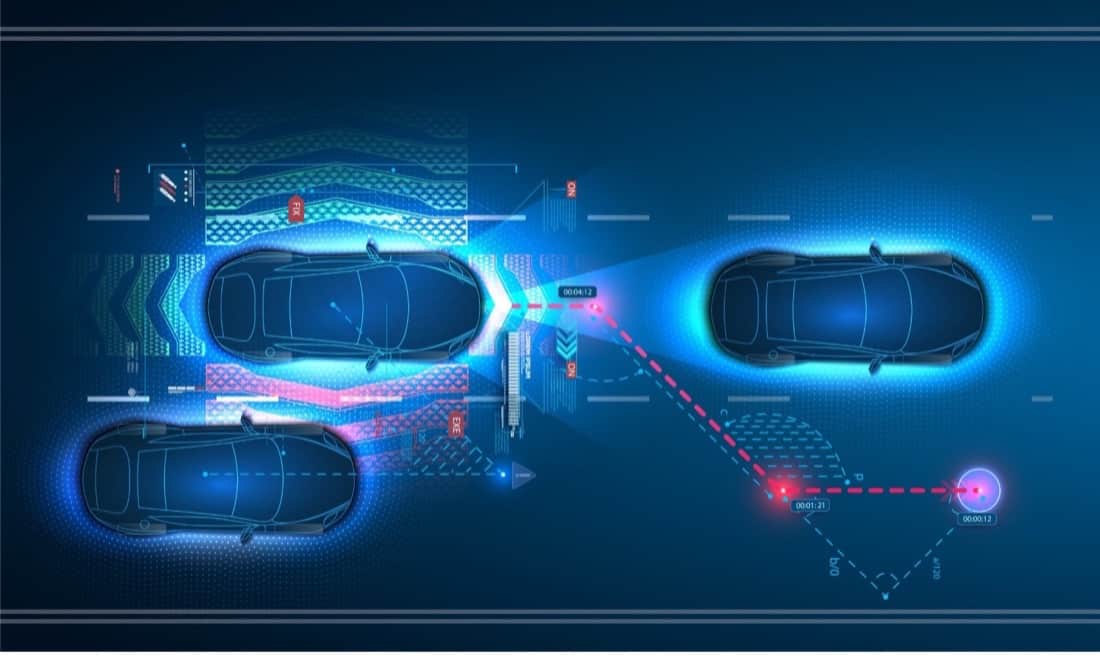
In the modern vehicle, dozens of technologies work together to enhance performance, comfort, connectivity, and safety. However, not all in-car systems serve the same purpose. Advanced Driver Assist Systems (ADAS) stand out because their primary function is safety and real-time driving support, whereas many other technologies focus on entertainment, navigation, or vehicle management.
ADAS vs Infotainment Systems
Infotainment systems provide media access, navigation, voice control, and smartphone integration, enhancing the user’s digital experience while in the car. While infotainment is often about comfort and engagement, ADAS is about active intervention—it can apply brakes, steer the vehicle, or issue collision warnings.
The key difference lies in responsiveness to external conditions: infotainment reacts to user input, while ADAS reacts to the driving environment. While both use touchscreens and cameras, ADAS technologies demand real-time decision-making that can directly impact safety.
Comparison Table Between ADAS and Autonomous Driving
| Criteria | ADAS (Advanced Driver Assist Systems) | Fully Autonomous Driving |
|---|---|---|
| Driver Involvement | Required | Not required (Levels 4 and 5) |
| Scope of Control | Specific tasks (braking, lane, speed) | Full driving, all scenarios |
| Real-time Decision Making | Assistive, reactive | Fully decision-capable |
| Availability | Widely available today | Limited testing, early deployment |
| Legal Responsibility | Driver | Still under legal and regulatory debate |
ADAS vs Telematics and Vehicle Management Systems
Telematics focuses on data collection and transmission—often used for fleet management, insurance tracking, or remote diagnostics. It helps monitor vehicle health, fuel usage, and driver behavior but doesn’t directly intervene during driving.
In contrast, ADAS systems respond immediately to road dynamics, such as detecting a pedestrian or adjusting speed on a downhill slope. While telematics may suggest maintenance or risk trends, ADAS acts on threats in the moment, preventing collisions or mitigating danger.
ADAS and Autonomous Driving: Complementary, Not Identical
ADAS is often confused with autonomous driving, but the distinction is critical. Autonomous driving (Levels 4–5) refers to vehicles that can operate entirely without human input in designated conditions. ADAS, on the other hand, exists at Levels 1–3, where the human driver remains actively involved.
Rather than replacing the driver, ADAS is designed to support and enhance human driving skills. While ADAS can manage speed, maintain lanes, or avoid obstacles, it still requires the driver to monitor and override the system when necessary. In many ways, ADAS is the training ground for both drivers and machines to prepare for full autonomy.
ADAS Integration with V2X and Cloud Technologies
Another trend is the integration of ADAS with vehicle-to-everything (V2X) communication and cloud-based analytics. V2X allows vehicles to communicate with traffic infrastructure, pedestrians, and other vehicles—giving ADAS systems access to real-time information beyond onboard sensors.
Meanwhile, cloud connectivity enhances ADAS by enabling over-the-air (OTA) updates, sharing driving data for continuous system improvement, and tailoring assistance based on driving history or location-based conditions. This convergence is gradually transforming ADAS from a standalone safety layer into a dynamic, connected intelligence platform.
The Future of Advanced Driver Assist Systems
As the automotive industry accelerates toward greater autonomy and smarter mobility, Advanced Driver Assist Systems are evolving rapidly—becoming smarter, more connected, and more adaptive. The future of ADAS lies not only in expanding its feature set, but also in how seamlessly it integrates with AI, cloud computing, and the connected vehicle ecosystem.
AI-Driven Decision Making and Personalized Assistance
Future ADAS will increasingly rely on artificial intelligence in Automotive Industry make better, faster, and more personalized decisions. Machine learning algorithms will continuously learn from millions of driving scenarios—both from the individual vehicle and from the entire connected fleet—to improve predictive accuracy.
For example, an ADAS system might learn a driver’s behavior over time and adapt how it issues warnings or engages interventions. In areas with heavy pedestrian activity or poor signage, AI models could predict risky situations and proactively adjust system sensitivity. This transformation will allow ADAS to evolve from “rule-based” assistance to context-aware, adaptive systems.
Seamless Integration with Smart Infrastructure
As cities move toward smart mobility ecosystems, ADAS will become more connected to external infrastructure through Vehicle-to-Everything (V2X) technologies. These connections enable vehicles to receive real-time data from traffic signals, emergency vehicles, road sensors, and other cars on the road.
Imagine a car slowing down automatically when approaching a red light that’s still out of view—or changing lanes based on traffic flow alerts from nearby vehicles. This type of cooperative driving will significantly improve efficiency, reduce congestion, and further lower the risk of accidents.
Expanded Regulations and Global Standardization
Governments and regulatory bodies around the world are beginning to recognize the importance of ADAS and are introducing mandatory safety standards. The European Union, for example, is already requiring features like AEB and intelligent speed assistance on new vehicles, and other regions are expected to follow.
Global standardization will not only accelerate the adoption of ADAS but also improve driver understanding and trust. As regulations mature, automakers will be held to more consistent performance benchmarks, ensuring that ADAS works reliably across brands and geographies.
Toward Full Autonomy: ADAS as the Foundation
Perhaps most significantly, ADAS will serve as the technological and behavioral foundation for the transition to full autonomy. As drivers grow accustomed to handing over parts of the driving task to intelligent systems, trust and usability will evolve in parallel with the technology.
The path to fully self-driving cars is long and complex, but ADAS represents a real-world bridge—helping society make the leap one assistive feature at a time. In the coming decade, we can expect to see ADAS systems that are not only more capable, but also more intuitive, connected, and essential than ever before.
Conclusion
Advanced Driver Assist Systems (ADAS) are reshaping the driving experience in profound and practical ways. No longer reserved for luxury vehicles, these technologies have become central to how modern cars keep drivers safe, informed, and supported on the road. From lane keeping and adaptive cruise control to emergency braking and blind spot monitoring, ADAS features are designed to reduce human error—the single largest cause of traffic accidents worldwide.
What makes ADAS so impactful is not just its technological sophistication, but its real-world usability. These systems work silently in the background, assisting without dominating, correcting without replacing, and ultimately empowering drivers to navigate more confidently. As automotive innovation continues to evolve, ADAS will play an increasingly crucial role in bridging the gap between human driving and full vehicle autonomy.
Understanding, trusting, and using ADAS correctly is no longer optional—it’s becoming an essential skill for the modern driver. Whether you’re commuting through city traffic or cruising along highways, these intelligent systems are not just conveniences—they’re life-saving tools built into the very fabric of next-generation mobility.
FAQ about Advanced Driver Assist Systems
What is the main goal of ADAS in vehicles?
The primary goal of ADAS is to improve road safety by assisting drivers in detecting, avoiding, or responding to potential hazards. It reduces the risk of accidents and enhances the overall driving experience.
Are ADAS features available in all car models?
While not universal, ADAS features are now available across many vehicle segments—from economy cars to premium models. Many safety packages include core features like automatic emergency braking and lane departure warning as standard.
Is ADAS the same as autonomous driving?
No. ADAS assists the driver with specific tasks (like braking or lane keeping), but the driver remains responsible. Autonomous driving (Levels 4 and 5) involves vehicles operating independently, which ADAS does not provide.
Can ADAS prevent all types of road accidents?
ADAS significantly reduces accident risk but cannot eliminate all crashes. It works best as a support system—not a replacement for attentive driving. Sensor limitations and external factors can still affect performance.
How do drivers benefit from ADAS on a daily basis?
ADAS reduces fatigue, enhances situational awareness, and provides real-time assistance. Whether during highway cruising or parking, it makes driving safer, more convenient, and more responsive.

